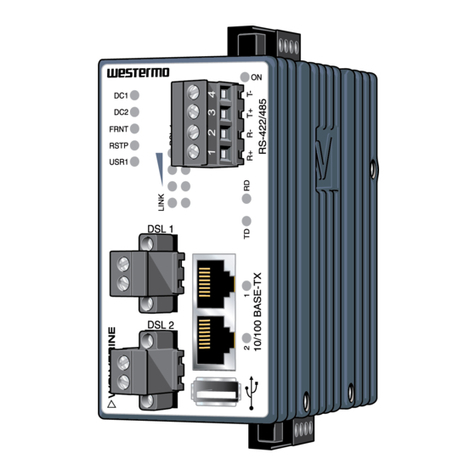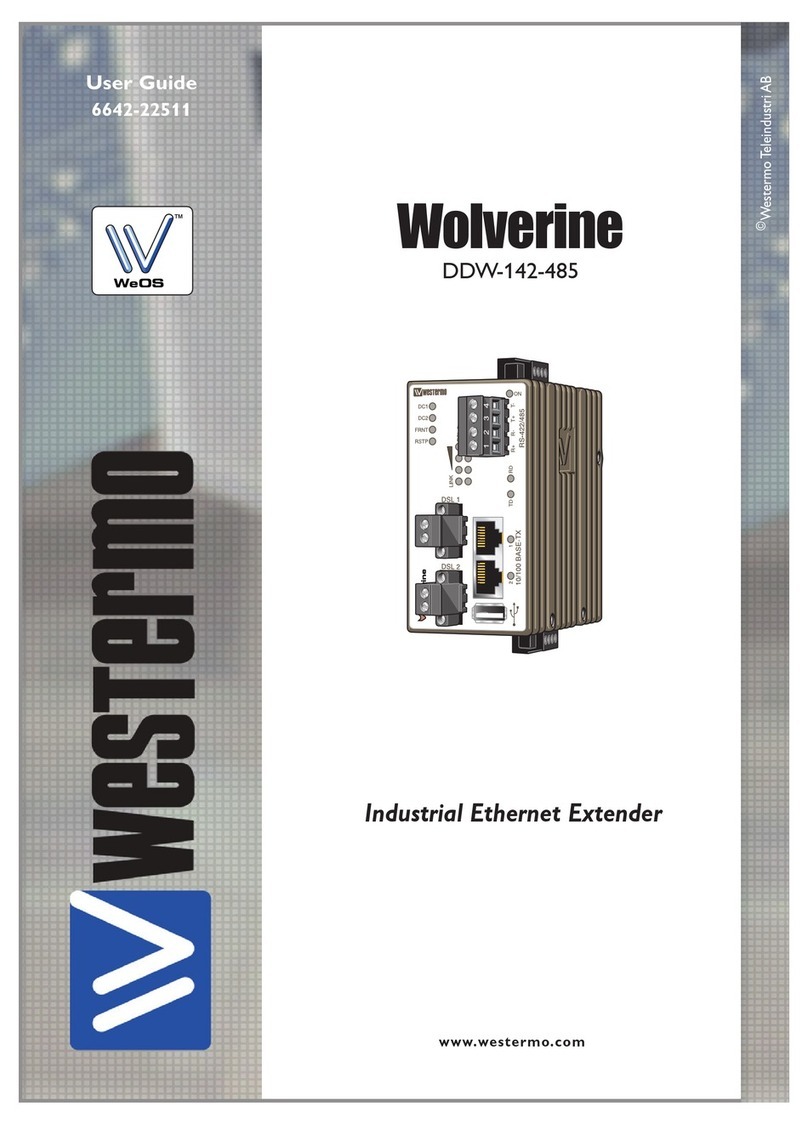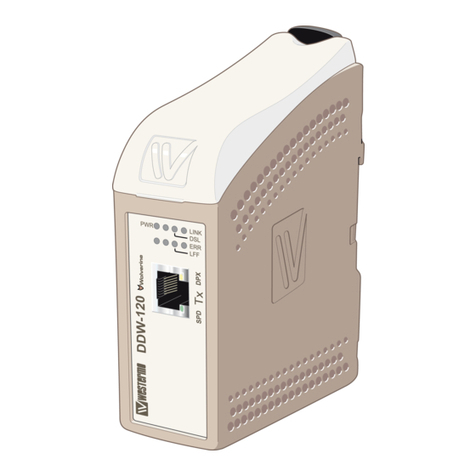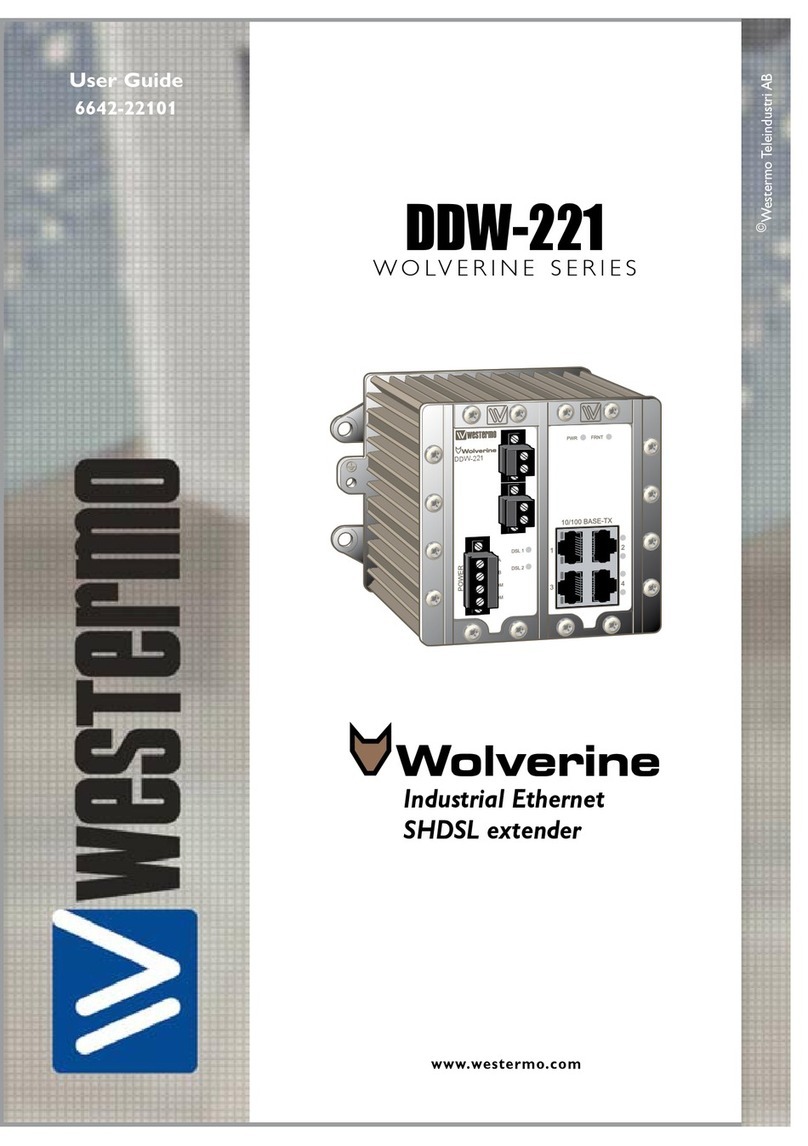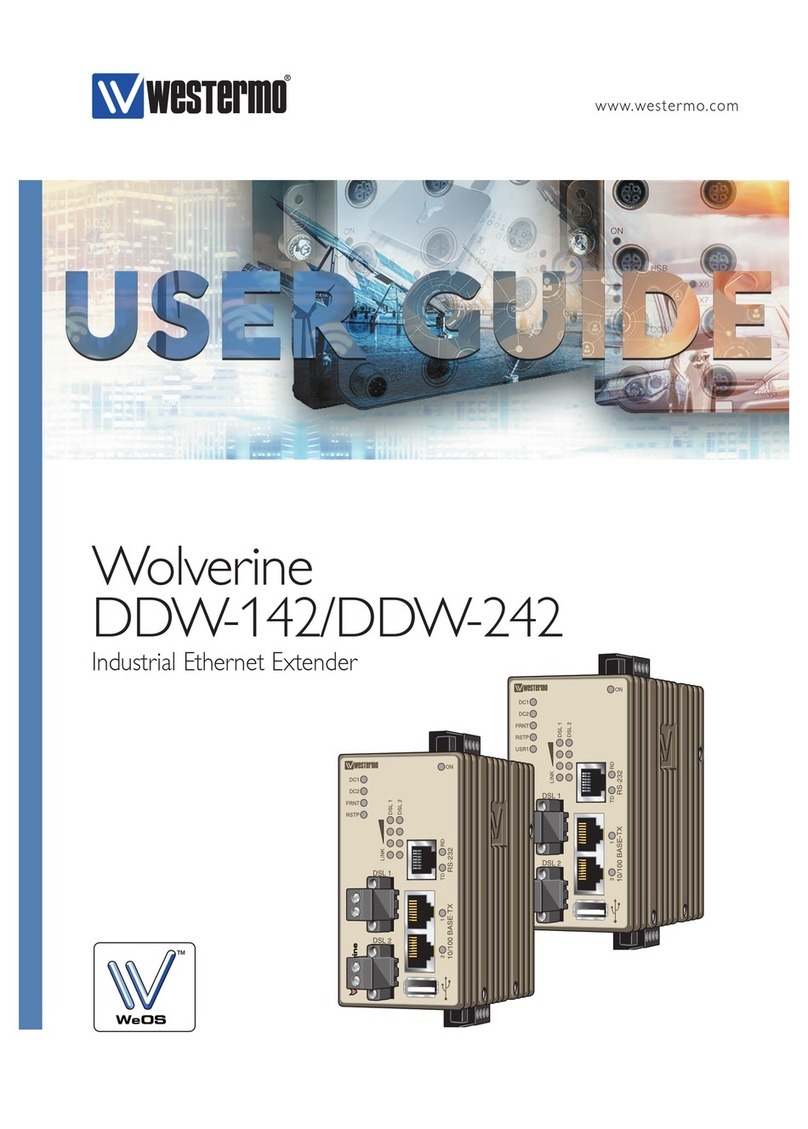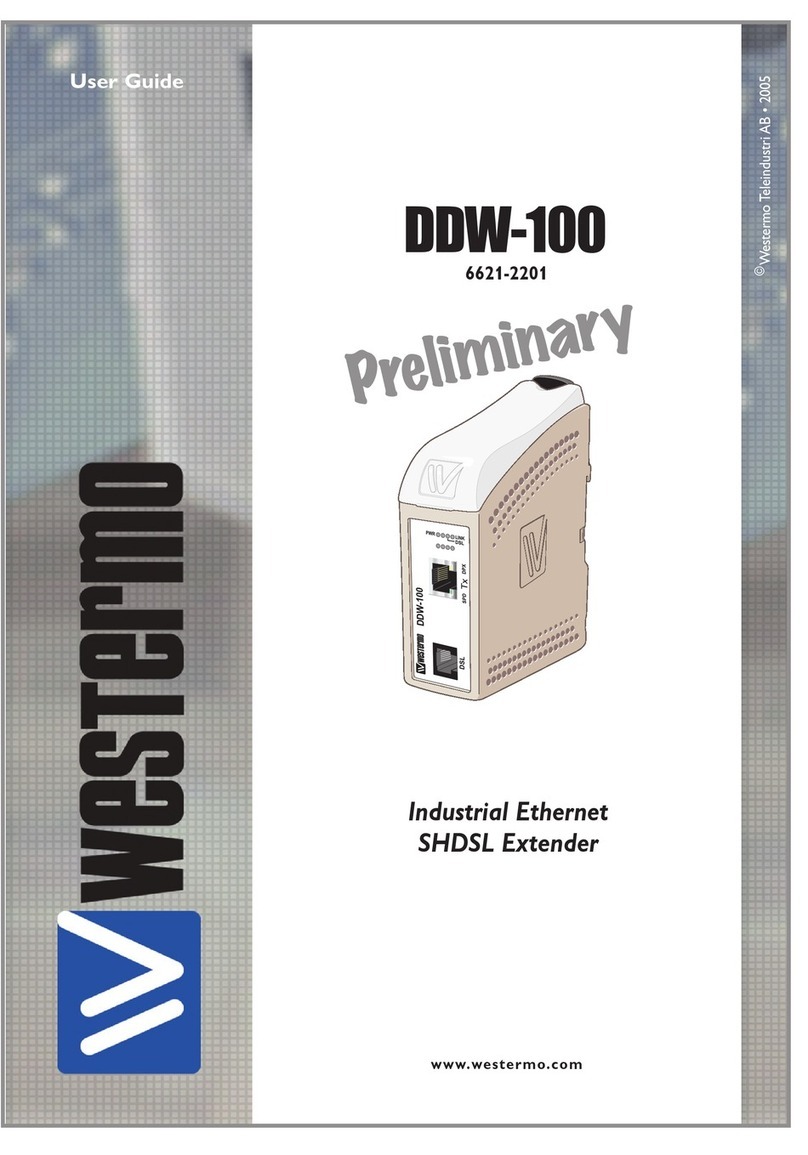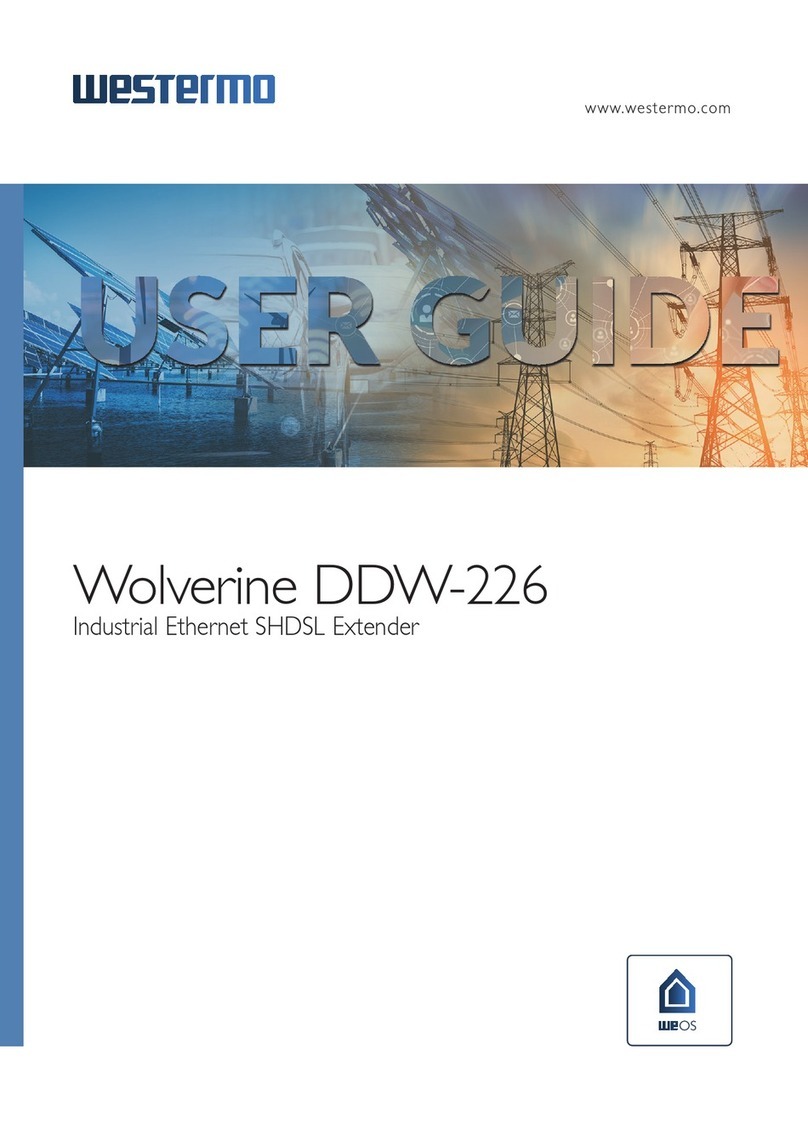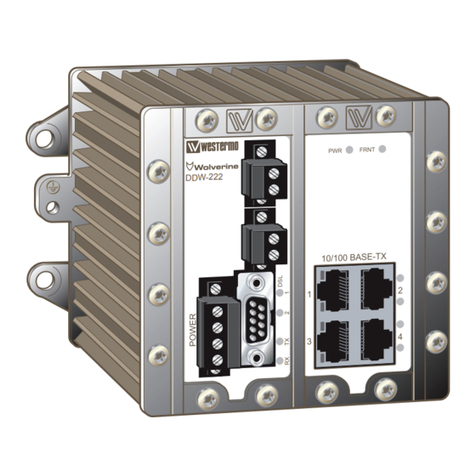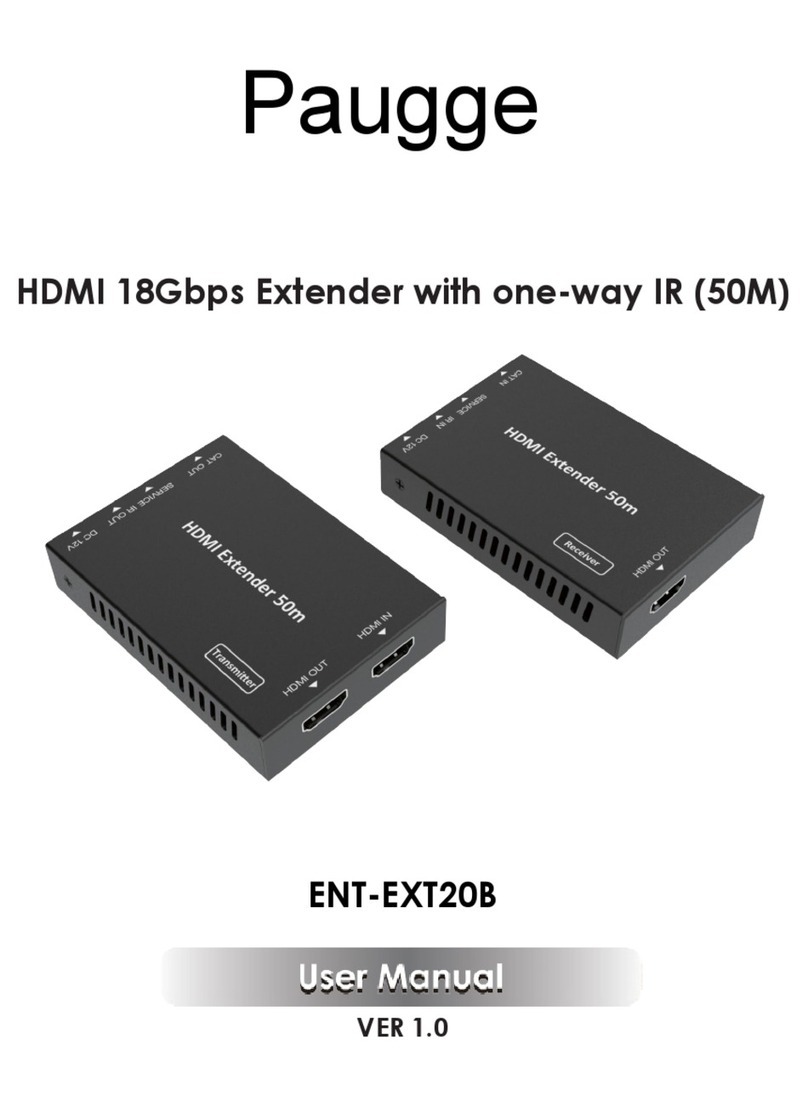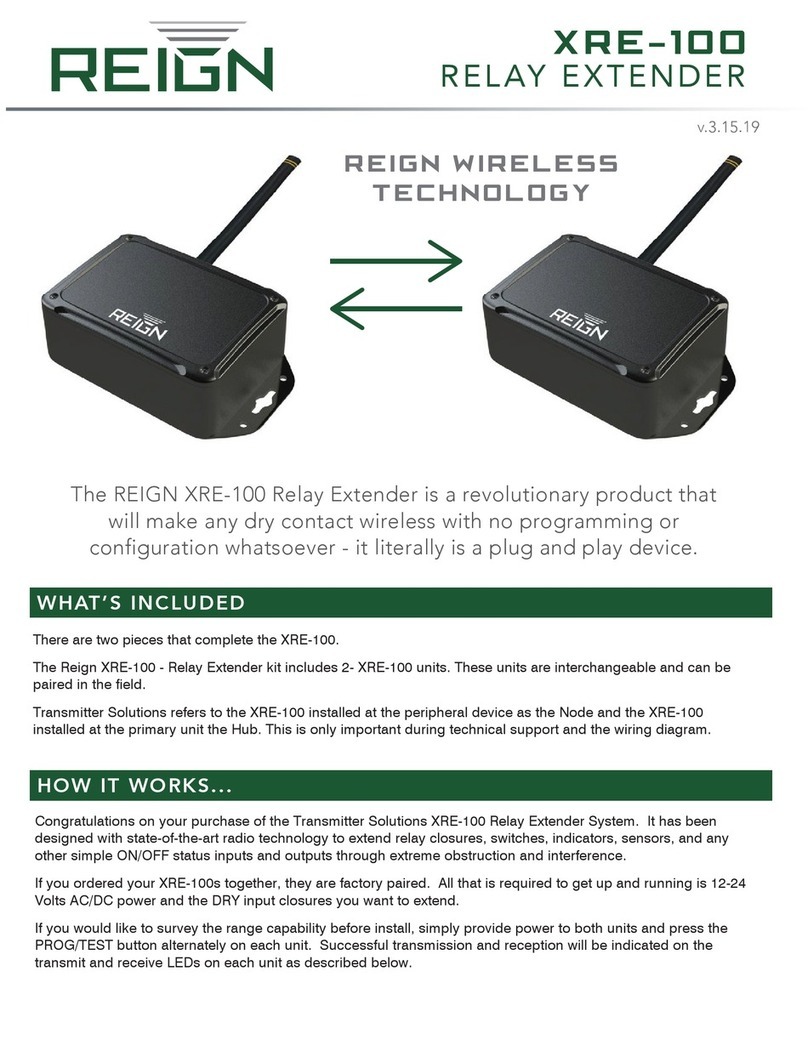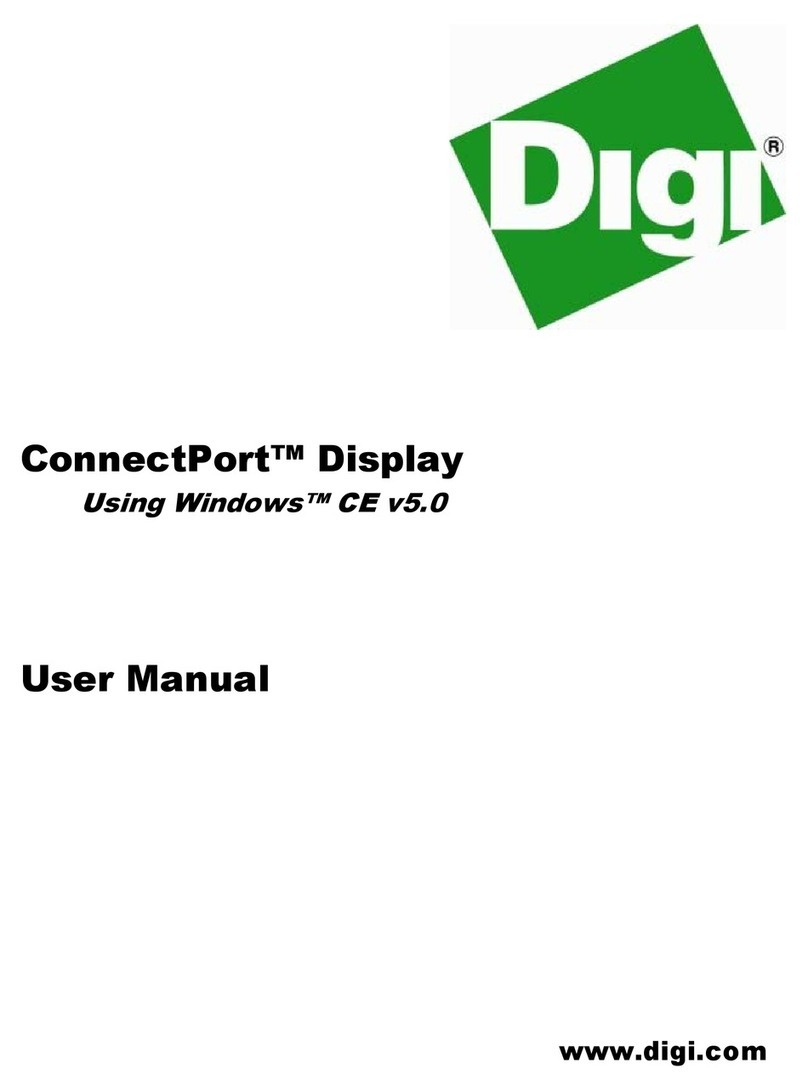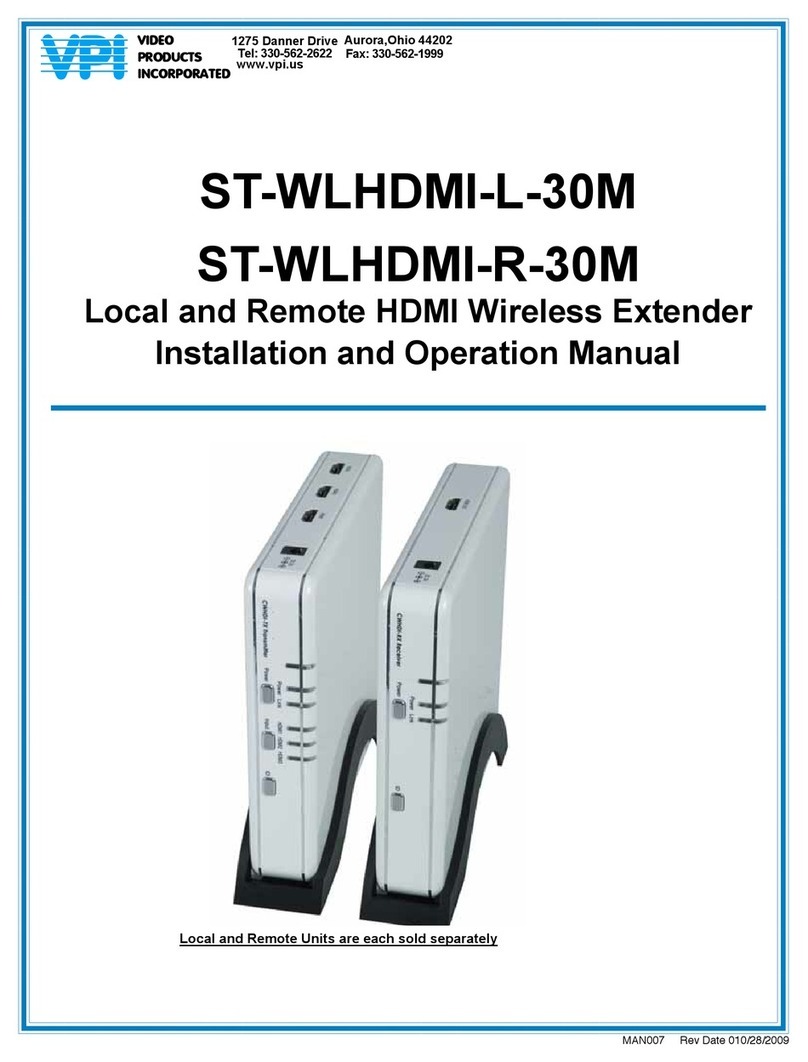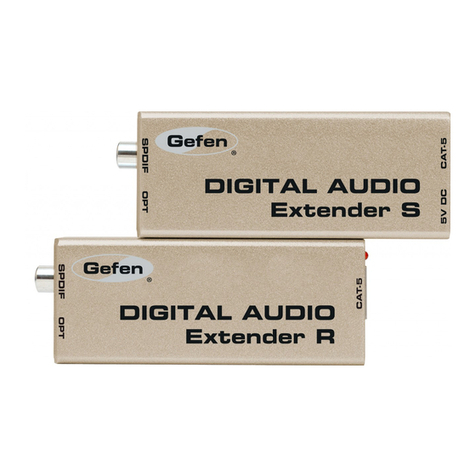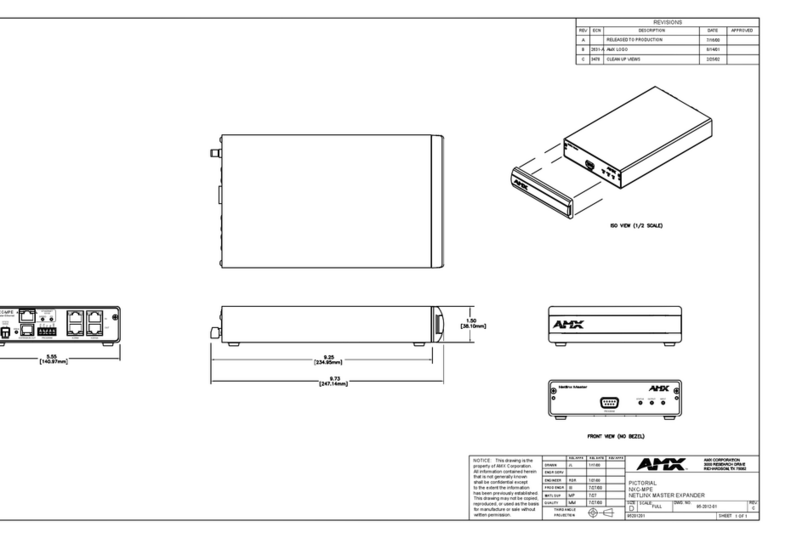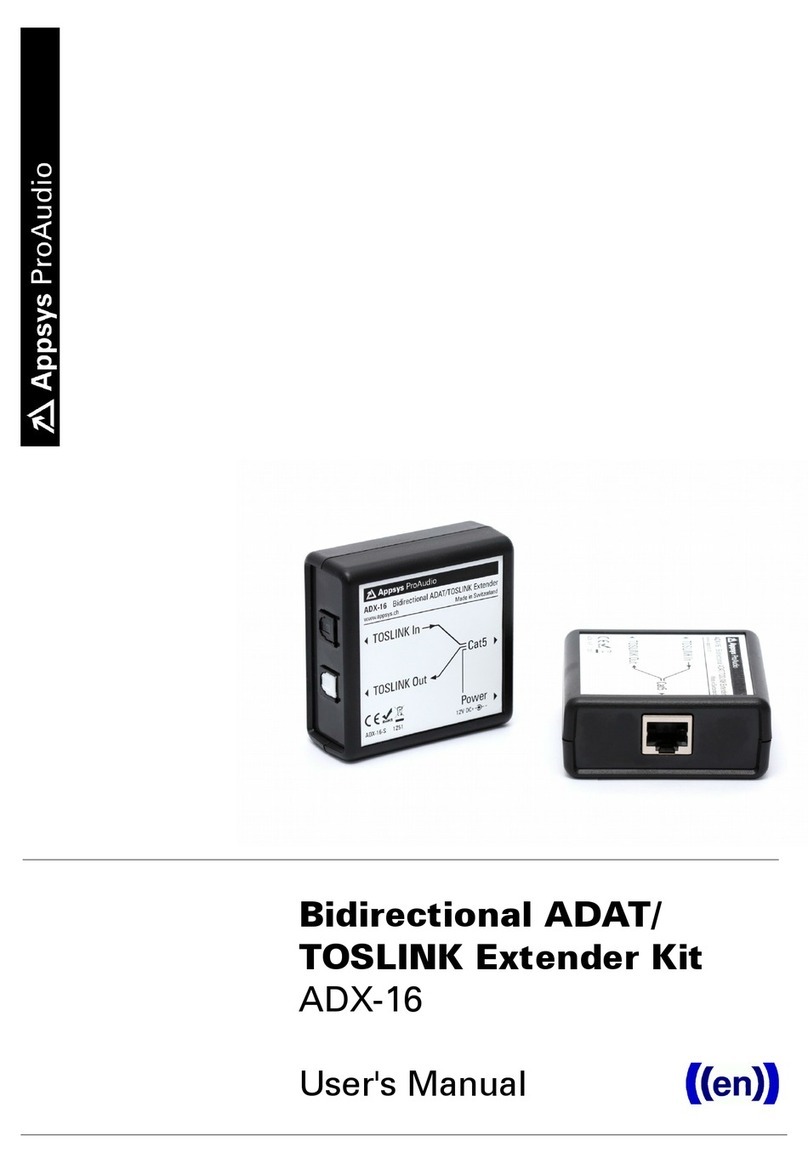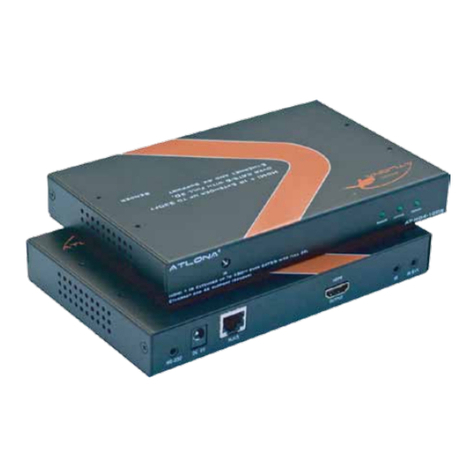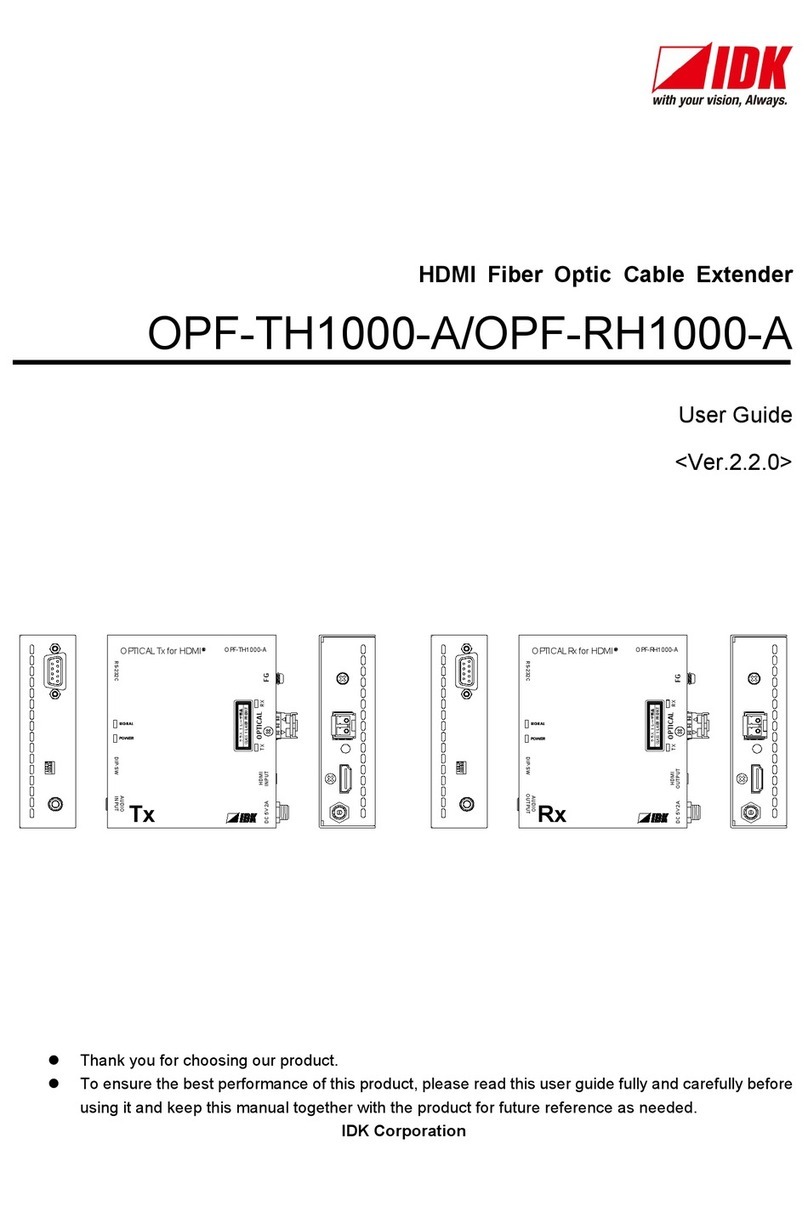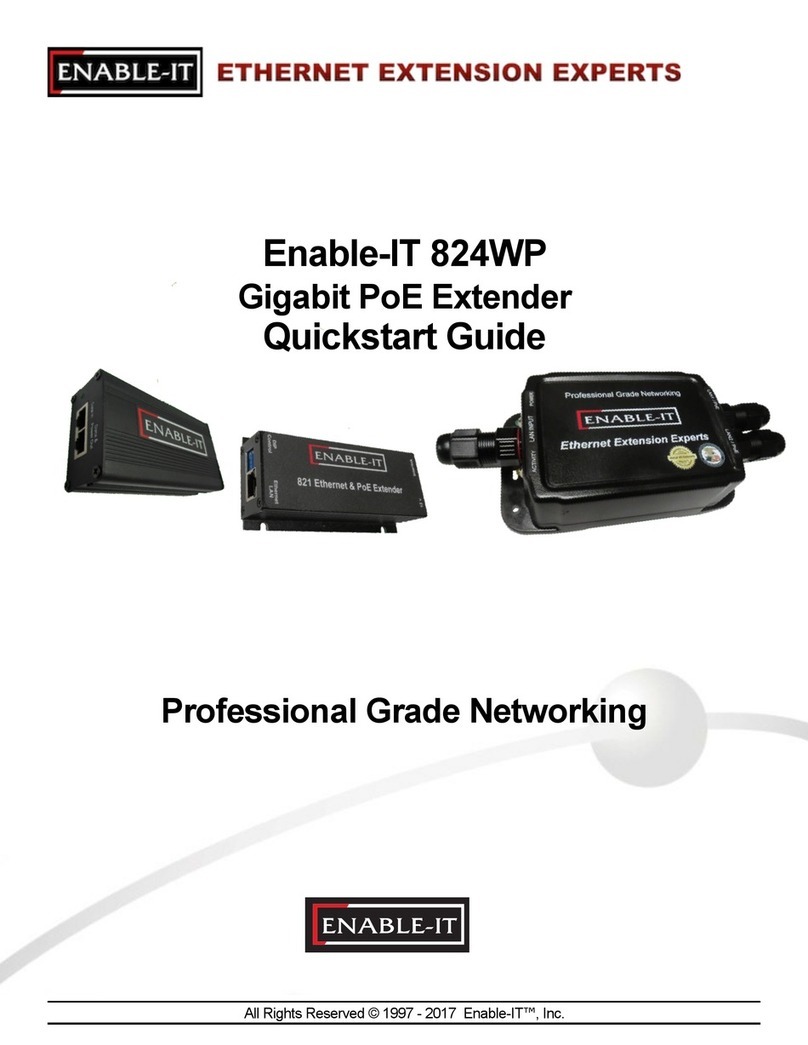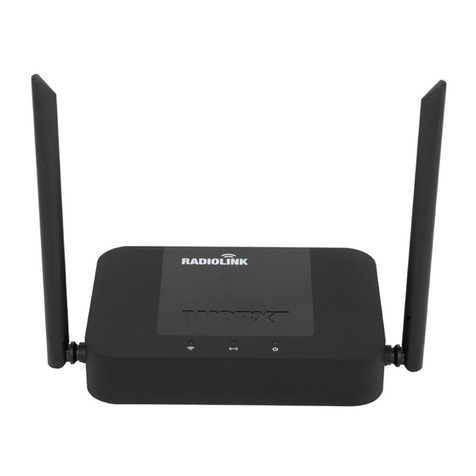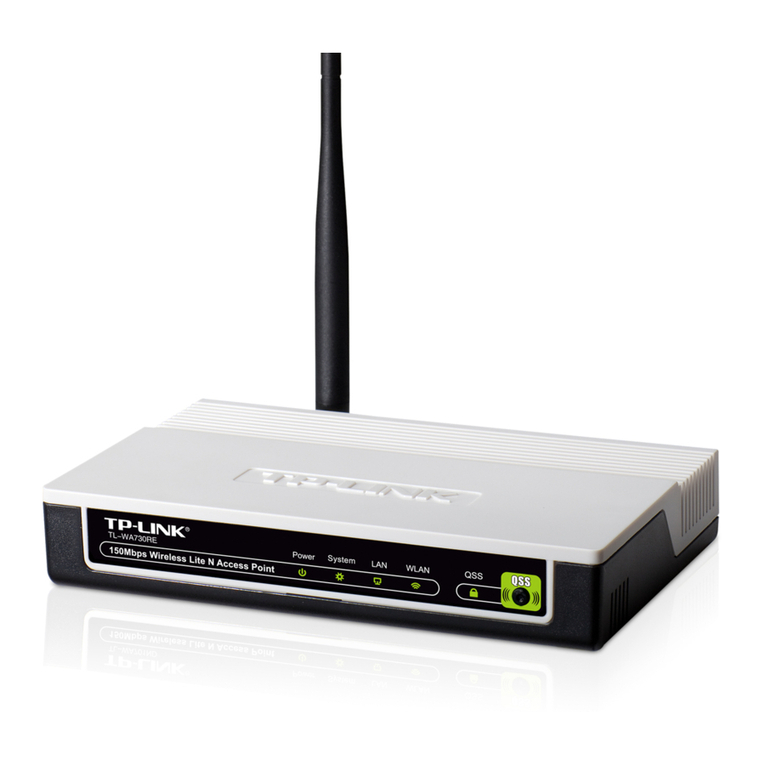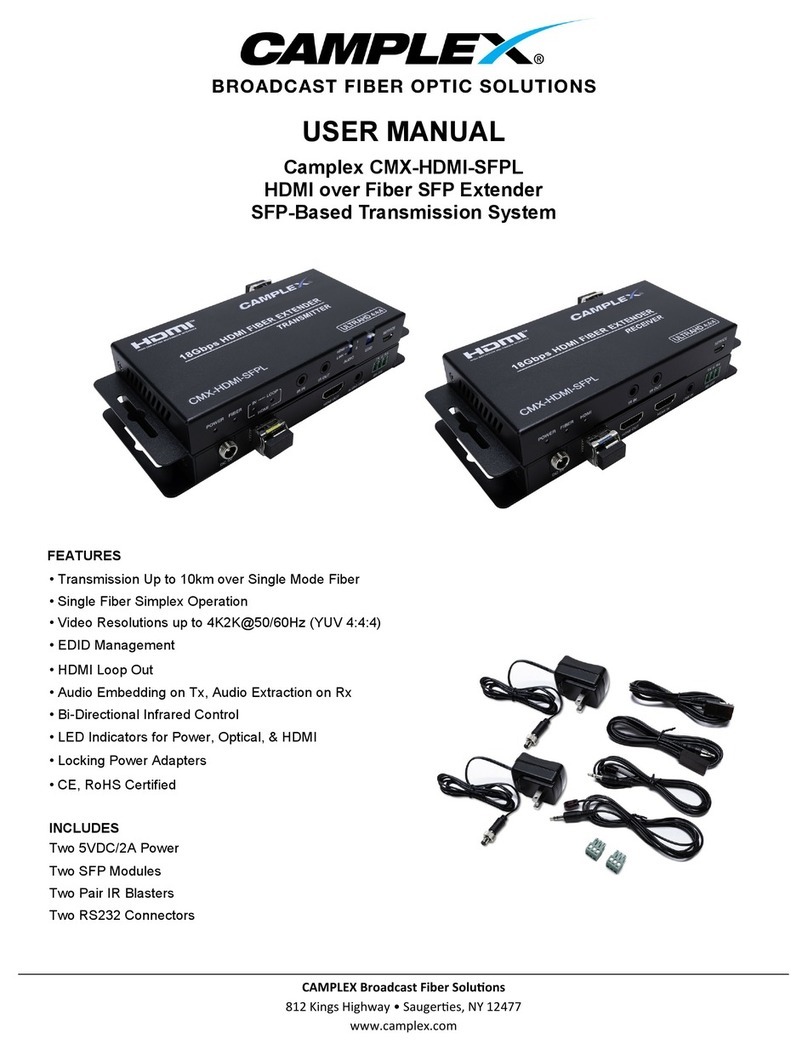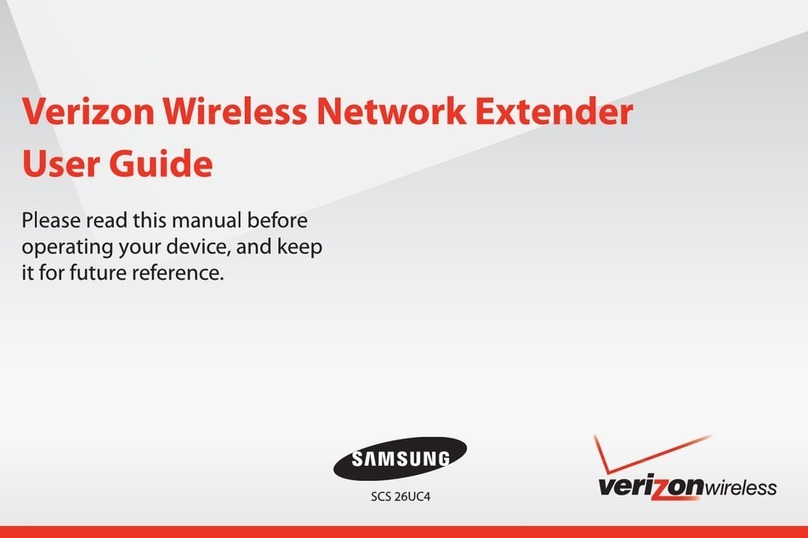
Westermo OS Management Guide
Version 4.24.1-0
5.1 Overview of the WeOS CLI hierarchy ................... 48
5.2 Accessing the CLI ............................... 50
5.3 Using the CLI .................................. 54
5.4 General CLI commands ............................ 60
6 WeOS SNMP Support 64
6.1 Introduction and feature overview ..................... 64
6.2 Managing SNMP via the web interface .................. 77
6.3 Manage SNMP Settings via the CLI .................... 81
II Common Switch Services 86
7 General Switch Maintenance 87
7.1 Overview ..................................... 87
7.2 Maintenance via the Web Interface .................... 125
7.3 Maintenance via the CLI ........................... 140
8 General System Settings 172
8.1 Overview of General System Features .................. 172
8.2 Managing System Settings via Web .................... 176
8.3 Managing System Settings via CLI ..................... 182
9 Authentication, Authorisation and Accounting 201
9.1 Overview over AAA .............................. 202
9.2 Managing AAA via the web ......................... 211
9.3 Managing AAA via the CLI .......................... 231
9.4 Feature Parameters .............................. 251
10 Ethernet Port Management 252
10.1 Overview of Ethernet Port Management ................. 252
10.2 Managing port settings via the web interface ............. 267
10.3 Managing port settings via the CLI .................... 271
11 Ethernet Statistics 281
11.1 Ethernet Statistics Overview ........................ 281
11.2 Statistics via the web interface ....................... 288
11.3 Statistics via the CLI .............................. 293
12 SHDSL Port Management 296
12.1 Overview of SHDSL Port Management .................. 296
12.2 Managing SHDSL ports via the web interface ............. 302
4
©
2018 Westermo Teleindustri AB
